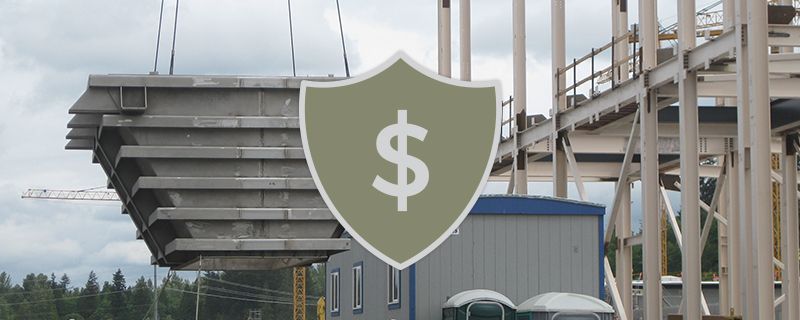In waste water treatment applications, Biosolids Storage Hoppers and Silos that provide temporary storage, and complete Bio-Handling Systems are often required. Storage is needed for wet dewatered sludge as it is staged for bin or truck haul off, to receive material from truck delivery, or supplying regulated conveyor or pump feed to downstream processes such as Incinerators, Thermal Dryers or Thermal Hydrolysis Process. Biosolids storage may also be utilized for thermal dried sludge downstream of dryers and greenhouses.
When considering the cost of a Live Bottom Hopper or Silo for storage and delivery of Biosolids there are two important things to consider:
- The Capital Cost of the equipment
- The lifetime or Total Cost of Ownership (TCO) of the equipment
Capital costs are initial expenses incurred on the purchase of property, construction, and equipment to bring a project to a commercially operable status. Project design criteria and specifications drive equipment capital costs.
To examine design criteria basics for determining budgetary costs for Bio-Hoppers we have divided Bio-Hoppers and Bio-Silos into the following general categories:
Cost for Silos, shop welded
Cylindrical shop welded tanks with conical bottoms are limited to shippable sizes, typically 8’ for legal truck load, often up to 10’ to 12’ when routes permit loads with more height, and rarely 14’ and larger. Cylindrical tanks, silos, are typically used for free-flowing dried sludge and include bin activators and air locks. They may be carbon steel painted, but most frequently are stainless steel due to the economy of shop manufacture, and interior coating difficulties with a closed welded vessel.
Budget pricing for this type of hopper ranges from $50,000 up to several hundred thousand dollars depending on volume requirements.
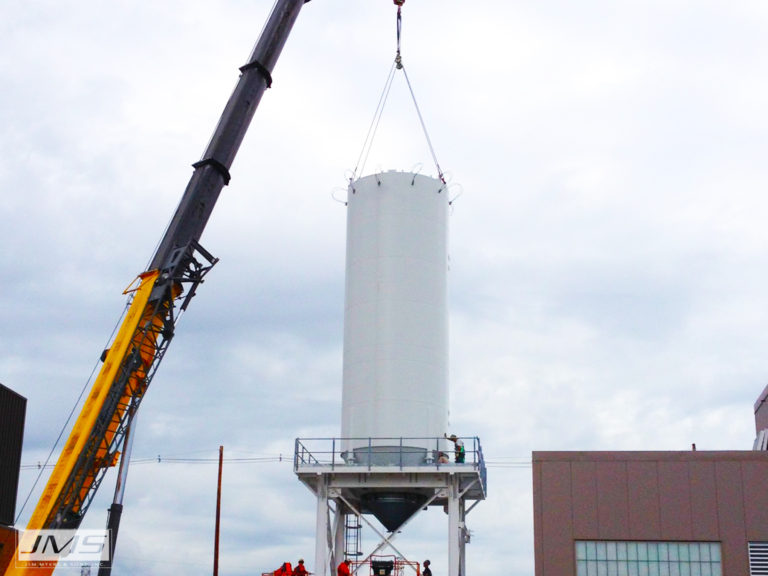
Cost for Silos, site bolted
These cylindrical site bolted tanks with conical bottoms, are manufactured in shippable segments and site erected. They are large diameter silos, high volume and used for free-flowing dried sludge with bin activators and air locks or live bottom screws for dewatered sludge. The cylindrical shape is the most economical per volume to manufacture but this shape is not as efficient for storage as a rectangular or square footprint. Because the vessel segments can be produced in manageable sizes, high quality coatings can be applied to carbon steel during the manufacturing process. This is typically the first choice. Stainless steel is also an option for this tank.
The budget capital cost of a cylindrical silo vessel can vary from $50,000 for a small bolted silo to over $1,000,000 depending on the size, and materials of construction.
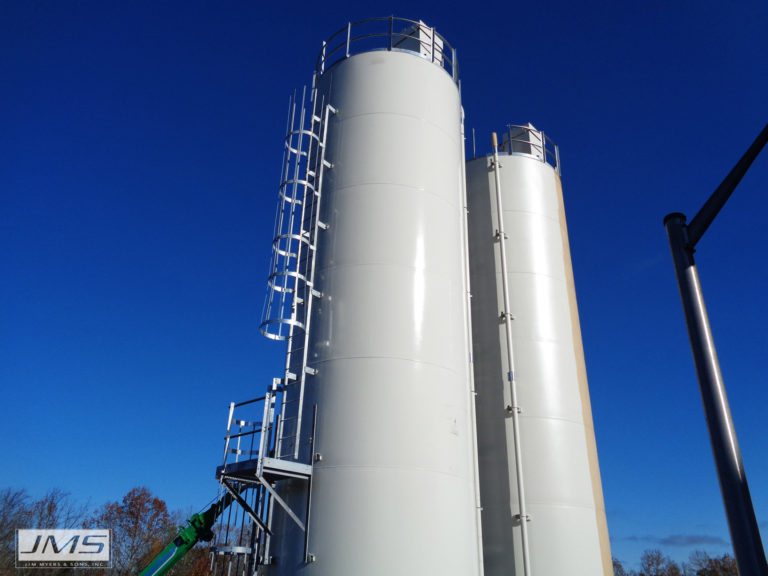
Cost for Hoppers, shop welded
These rectangular or square shop welded hoppers typically have inverted four-sided truncated pyramid bottoms terminating into live bottom screws. They are limited to shippable sizes and typically, legal height is more the issue than width when considering shipping. Capacities on the shop welded hopper can range up to 50 cubic yards.
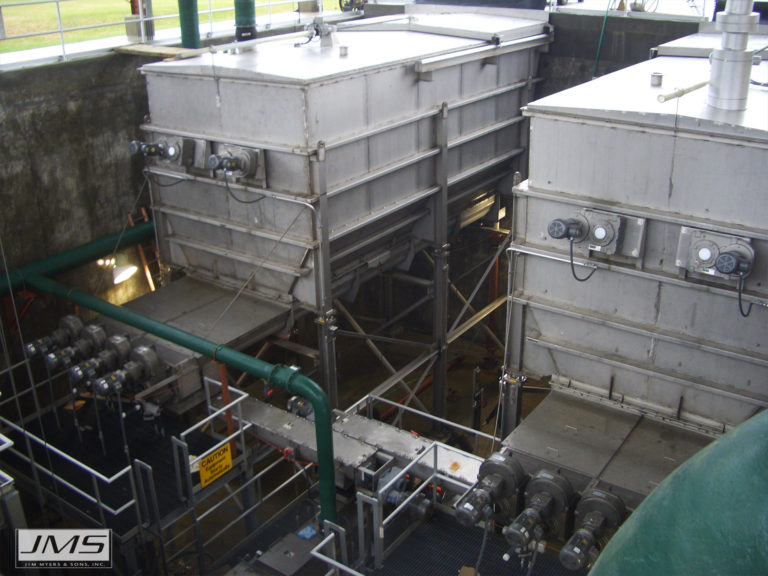
Cost for Hoppers, site bolted/welded
These rectangular or square site welded and/or bolted hoppers typically have inverted four-sided truncated pyramid bottoms terminating into live bottom screws. They are typically designed in segments to be shipped as a legal load. They can be large volume vessels ranging up to and sometimes over 500 cubic yards.
Both rectangular and square shop welded and site welded/bolted hoppers are often used for dewatered sludge storage with live bottom screws out-loading via bottom slide gates, to trucks, pumps or conveyors for downstream process.
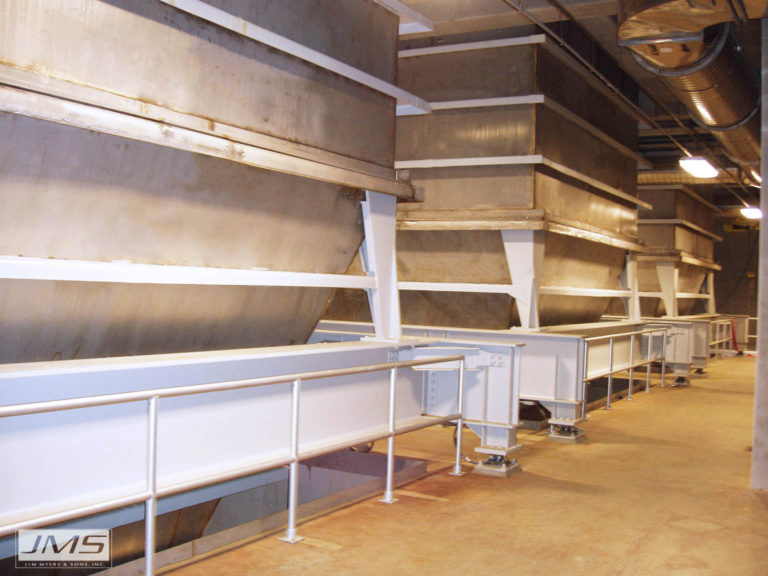
Rectangular or square hoppers are the most volume efficient for their footprint, but will usually cost more per cubic yard of usable volume. They may be painted carbon steel, however the vessel is frequently stainless steel due to stainless steel prices, coating costs and handling. Large stainless steel hoppers often utilize carbon steel painted or HDG vertical columns due to the limited availability of heavy stainless I beams and their cost.
Budget capital cost of a hopper with live bottom, can vary from $50,000 to over $1,000,000 depending on the size, materials of construction, and complexity of the system as defined in the project scope. Every hopper design is application specific but JMS can offer budgets based on historical experience.
Total cost of ownership (TCO) is a financial estimate intended to help buyers and owners determine the direct and indirect costs of a product or system. It includes capital, installation, operational, maintenance and sometimes disposal costs. In plant design, 15-20 years life cycle is generally used for mechanical equipment.
JMS has been manufacturing quality water and wastewater treatment equipment for over fifty years. We have pioneered many design and manufacturing enhancements that reduce that operational and maintenance needs of the equipment, and increase equipment longevity. JMS Equipment is designed for optimum performance and built to meet and exceed the 20-year life cycle reducing the total cost of ownership.
Greg Hyde joined the JMS Sales and Marketing Team as Product Manager | Material Handling. Greg has over 30 years of experience in material handling systems, having held high level engineering, sales and business management positions with large full line conveyor manufacturers. He is responsible for overall support and growth of the JMS Bio-HANDLING product line. Outside of work, Greg is a founding member of the “Jammin’ 4 Water” (Water Charities Fundraising Inc.). In regards to his position, Greg says, “ JMS has a rich history in design, quality and material handling. I’m excited to be part of this great team and look forward to guiding the Bio-HANDLING product family for long-term growth.”

